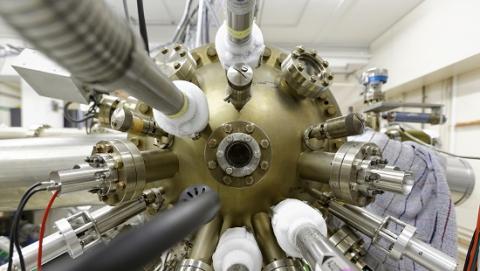
Investigations of bone wastes as advanced energy displays
AAP 2021 : Projet postdoctoral
Axe thématique : 3 - Défis et recherche fondamentale
Porteur de projet : Nadine Nassif (LCMCP)
Co-porteuse de projet : Ozlem Sel (LISE)
Doctorante : Camila Bussola Tovani
Laboratoires : Institut Jean le Rond D’Alembert
Camila Bussola Tovani, postdoctorante
Camila is from Brazil, where she graduated (2015) and obtained her PhD in Chemistry (2020) from University of São Paulo. As undergraduate student, she was awarded the Academic Merit scholarship from the University of São Paulo to undertake a six-month internship at the University of Évora in Portugal.
The scholarship from the São Paulo Research Foundation (FAPESP) enabled Camila to conduct her PhD advised by Dr. Ana Paula Ramos on the design of safer therapies for osteoporosis, and the development of physical-confinement approaches to synthesize calcium phosphate and calcium carbonate nanotubes. During this time, she undertook a 15-month international secondment at the Laboratoire de Chimie de la Matière Condensée de Paris (LCMCP, Sorbonne Université) advised by Dr. Nadine Nassif thanks to the Research Internships Abroad scholarship (BEPE-FAPESP).
At the LCMCP, Camila built her expertise in collagen extraction and manipulation, biopolymer self-assembly (liquid-cristal phases), 3D scaffold fabrication (biomaterials processes), biomineralization and solid state NMR. In 2021, she was awarded the National prize from the Coordination for Improvement of Higher Education (CAPES, Brazilian Federal Government) for the Best Thesis in Chemistry. Since September 2020, she has been a postdoctoral research fellow at Sorbonne Université under the co-supervision of Dr. Nadine Nassif (LMCP) and Dr. Özlem Sel (Laboratoire Interfaces et Systèmes Electrochimiques, LISE Sorbonne Université), where she applies her fundamental understanding of collagen and bone mineralization to develop “bone wastes as advanced energy displays”.
Currently she is fellow from the Institut de Science des Matériaux (IMAT) working on the investigation of self-assembly properties of collagen to build advanced bone-based materials.

Le projet de recherche
Producing electrochemical energy devices by recycling is a powerful approach to conciliate the reduction of fossil fuel energy consumption to the design of low cost, green and sustainable materials. Notably, bone and skin (dermis), which are made of type I collagen molecules, are the main bioproduct of meat processing and are usually treated as wastes (e.g., gelation production, meal for animals or glue for string), although they represent widespread and low-cost raw materials. Type I collagen possesses lyotropic properties and self-assembles in vitro into different liquid-crystal phases namely nematic (alignment), precholesteric (undulations) and cholesteric (plywood). Such long-range ordering and dynamic fluid in liquid-crystals may favor proton transport over large scales in collagen-based membranes. Therefore, the aim of this project is (i) to explore the self-assembly properties of collagen present in bone wastes to develop a new class of proton exchange membrane for fuel cells and (ii) to compare its performance to the synthetic gold standard ionomer Nafion (Figure 1).
The project will be conducted in two steps. The first step comprises the preparation and characterization of various bone-like matrices including mineralized and non-mineralized anisotropic collagen gel. The second step comprises the investigation of the potential applications of these materials as proton conducting membranes by using impedance spectroscopy and quartz crystal microbalance. The mechanisms behind the conductivity properties will also be investigated, and in particular the influence of liquid crystalline organization of collagen. On that purpose, macroscopic and microscopic structural aspect of the membrane will be examined by a combination of techniques.
We expect that this project will open perspectives to transform materials regarded as wastes in source of new advanced energy devices. In addition, the set of results and materials obtained will shed new light in the emerging field of bioelectronics where fundamental knowled
Figure 1. Scanning electron microscopy images of (a) the gold standard Nafion membrane and (b) a bone-like membrane prepared using collagen and further mineralized with calcium phosphate nanoparticles in the form of apatite.

